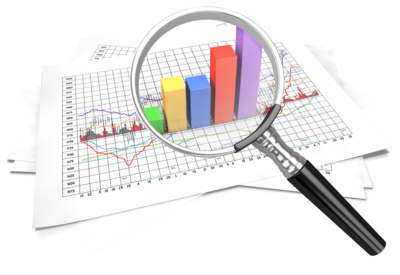A recent study of CMO’s found 7% use no metrics whatsoever in establishing their marketing 
Why the absence of marketing metrics?
I am sure there are a host of reasons. Corporate culture plays a role; in the study some respondents indicated their primary goal was to please their boss–If the boss doesn’t require metrics, then why bother? Some organizations may not be able to consistently capture the appropriate data.
To make matters a bit more complicated, there is confusion and controversy over terminology and marketing metrics. For example, the term ROI is widely misunderstood. ROI is often used to describe metrics that have nothing to do with financial results. For more on ROI, I recommend Oliver Blanchard’s book, Social Media ROI: Managing and Measuring Social Media Efforts in Your Organization.
Organizations that collect data often place very different values on the same company’s performance.
And then there are the issues associated with trying to measure social media, adequately discussed by my friend Heidi Cohen in her article “What’s wrong with social media metrics.”
What are marketing metrics and why are they important?
I like Katie Delahaye Paine’s definition of marketing metrics.
Measuring is not counting. Counting just adds things up and gets a total. Measurement takes totals, analyzes what they mean and uses the meaning to improve practices.
When used appropriately, marketing metrics inform the changes a business must make to provide relevant, profitable products and services to their customers. They also reinforce sound practices that should be continued.
Marketing budgets and ROI measurements must be part of a process
First, establish goals and objectives. Benchmarks are necessary comparison standards. Without standards, numbers can be meaningless. This is especially true when tracking trends.
Next, good data is essential. Goals and objectives help determine the type of data that will be required. Since data collection can be time consuming and expensive, finding the right balance is important. Collect too much data and you will be wasting valuable resources, too little and you will lack the necessary insight to make the right business decisions.
Analysis and insight is one of the most important aspects of the measuring process. At the heart of any good analysis is a series of curious questions. Extracting meaning from data is both art and science; it requires detailed knowledge of the business and a healthy skepticism to prevent poor decisions that can be based on the misinterpretation of the data.
Actionable next steps drive the business improvement process. Without business improvements, the real value of measurement will be lost.
What do you measure?
This question will vary by company and business. Most businesses align metrics around their sales cycle, often referred to as a sales funnel.
- There are metrics to analyze how a business turns suspects into prospects; the top of the sales funnel.
- Once in the funnel, how effectively does a business convert suspects and prospects to leads; the middle of the funnel.
- Finally, how efficient is a business converting leads to sales; the bottom of the funnel.
In addition to the sales process, businesses will want to monitor the health of their database. Health is determined by studying acquisition, retention, and defection rates. Understanding customer value is another important metric.
Where to begin with Metrics?
If you don’t have any metrics in place, you can start by establishing some basic KPI’s (Key Performance Indicators). Decide what metrics drive the outcomes that are important to you.
Next, identify the data that will be necessary to monitor and track the behaviors you want to observe. Measurement requires discipline, so once the data is identified, establish protocols for consistently capturing accurate data.
Study the data on a regular basis and watch for trends that reflect changes in behaviors. Share the findings with other stakeholders to ensure the analysis reaches the appropriate colleagues. Invite feedback from the stakeholders to close the loop on findings and use this information to refine the measurement process.
Here is a resource that will help monitor social media traffic:How to track Social Media Traffic with Google Analytics
ROI measurements may not be possible in all cases; however, marketing metrics are possible and necessary in all instances. While intuition may help, without data analysis there is great risk of inefficiency and failure.
What are you measuring? What kind of process do you use?